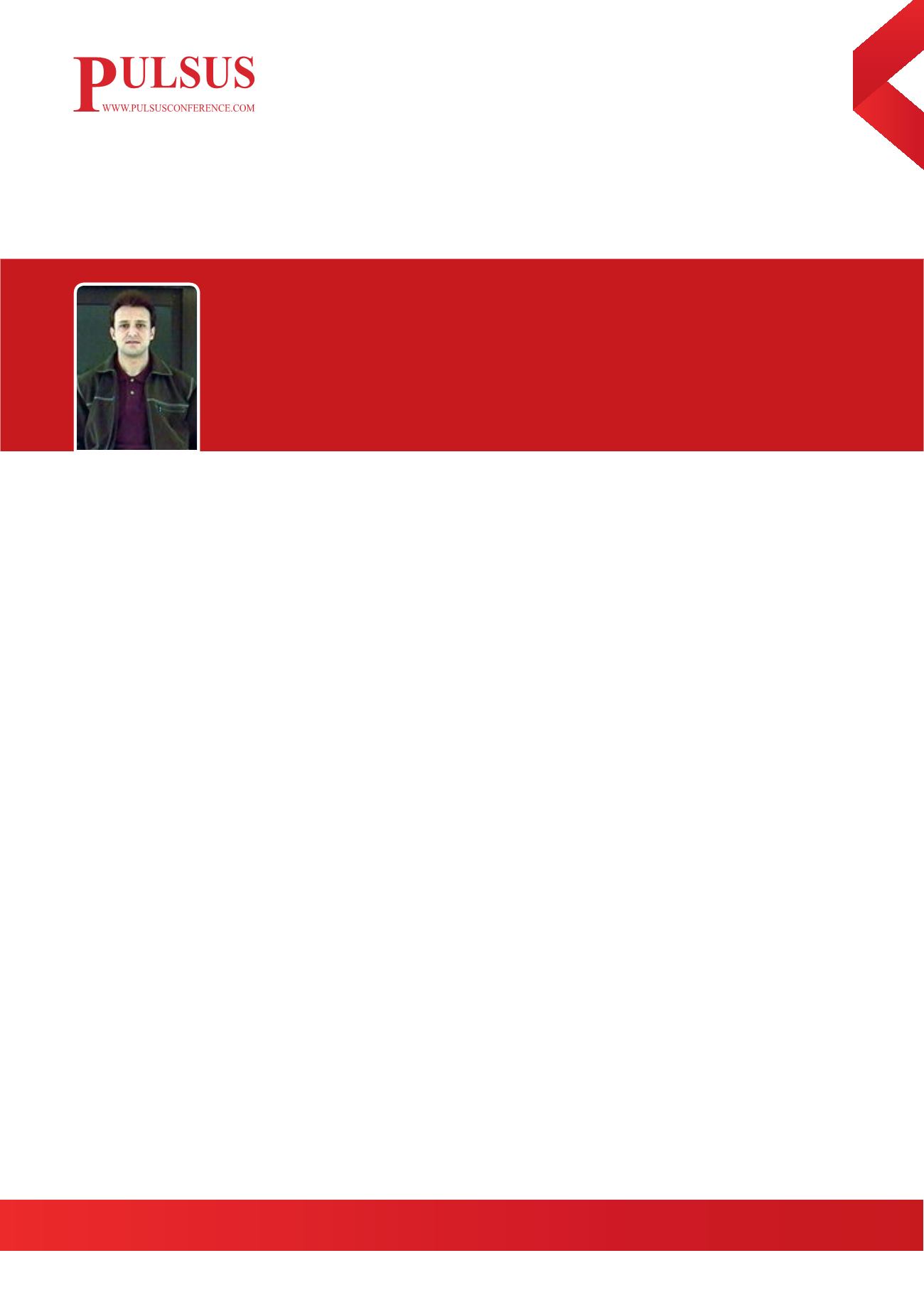

Volume 13
Journal of Orthopaedics Trauma Surgery & Related Research
Arthroplasty 2018
September 24-25, 2018
Page 27
Notes:
Arthroplasty
September 24-25, 2018 London, UK
11
th
International Conference on
Exploring benefits of ultrasonically - Assisted drilling in bone
Introduction
: Drilling in bone is a common surgical procedure in orthopedics for fixation and reconstructive surgeries.
Excessive force and torque, elevated temperature and microcracking in the complex composite microstructure of bone
caused by drilling operation may seriously affect osseointegration leading to the weakening of implants anchoring the bone.
Ultrasonically assisted drilling (UAD) has recently been successfully employed as a feasible substitute to conventional drilling
(CD) to overcome the prescribed issues.
Materials and Methods
: Ex-vivo drilling tests are performed on fresh bovine femur using surgical drills in the presence
of ultrasonic vibrations imposed on the drill in the cutting direction and controlled irrigation. Ultrasonic vibrations were
generated and coupled with the drill using a custom designed transducer. Force dynamometer and infrared camera were
used to measure the drilling force, torque and temperature during drilling. Micro-CT and Scanning Electron Microcopy were
performed to quantify microcracks in the drilled specimens. Surface profilometry of the cutting edges of drills were performed
to measure the roughness profile of the cutting edges of the drills. Post drilling microscopic examination of specimens were
performed to visualize the death of osteocytes near the drilling track.
Results:
A parametric study has been conducted to explore benefits of UAD over CD. UAD, using controlled frequency of
vibration up to 20 kHz, demonstrated lower penetration effort experienced by the drill, lower temperature in the drilling region
and fewer microcracks surrounding the hole in bone tissue compare to CD. Statistical analysis revealed strong correlation
between the roughness of the cutting edges of the drill and force and temperature produced irrespective of drilling technique.
UAD produced small chips and facilitated fast evacuation from the drilling track. In addition, UAD facilitated almost twice
number of holes compared to CD before the drill turned blunt and lost cutting ability. Histological investigations of bone tissue
revealed the death of fewer osteocytes in UAD in the immediate vicinity of drilled hole compared to CD.
Conclusion
: It is expected that utilization of this novel technique in bone surgical procedures will enhance safety of the process,
minimize surgical complications and financial burden on healthcare systems.
Biography
Khurshid Alam is an Assistant Professor in the Department of Mechanical and Industrial Engineering at Sultan Qaboos University of Oman. He is involved in teaching and
research in Mechanical and Biomechanical Engineering. He has completed is courses inApplied Finite Element Analysis, Engineering Drawing & Graphics, Fundamentals
of Biomechanics, Solid Mechanics, Properties and Strength of Materials, Statics, Engineering Dynamics.
kalam@squ.edu.om engr.dajan@gmail.comKhurshid Alam
Sultan Qaboos University, Sultanate of Oman
Khurshid Alam, J Arthroplasty 2018, Volume 13














